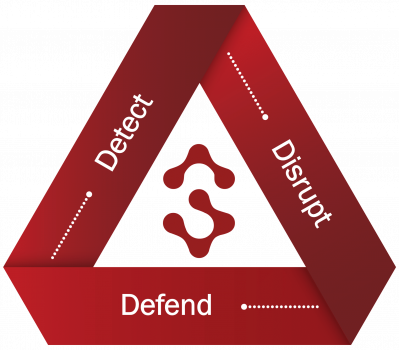Introduction: The AI Inflection Point for Businesses
Artificial intelligence is no longer a future trend; it’s a present imperative. Enterprise AI adoption is reshaping how companies compete, operate, and grow. Despite 72% of global companies now reporting using AI in at least one business function, this isn’t about smarter workflows or more efficient tools. It’s about a wholesale redefinition of what modern business looks like, and who is winning.
Across industries, AI-native companies are emerging with radically different economics, expectations, and speeds of execution. These firms aren’t experimenting with AI, they’re built on it. They deploy agents instead of dashboards, scale without added headcount, and deliver outcomes in real time.
For leaders driving AI business strategy, this moment is defining. The challenge is not whether to adopt AI, but how to reframe business models.
Strategy leaders must now ask: Are we adapting fast enough to compete with those who never had to?
What Is Enterprise AI Adoption, Really?
Enterprise AI adoption is the strategic integration of artificial intelligence into every layer of the business. It is not simply about using AI tools. It is about building a company that is AI-aware, AI-enabled, and AI-resilient. This means:
- Embedding AI across operations, not just in isolated functions
- Using AI to drive real-time decision-making and continuous learning
- Shaping company culture to embrace data-driven, adaptive thinking
- Rethinking how value is created, delivered, and measured
- Treating AI as a core business capability, not a plug-in technology
At its core, enterprise AI adoption is a redesign of how the business works, not just how it works more efficiently.
Opportunity or Threat? The Strategic Reality of Enterprise AI Adoption
Enterprise AI adoption is both an accelerant and a disruptor, a dual reality that makes the strategic response especially challenging.
- AI-native firms are rewriting the rules. With no legacy systems or cultural inertia, they move faster, scale leaner, and challenge incumbents head-on.
- Traditional enterprises hold powerful assets; trusted brands, proprietary data, customer depth; but risk losing relevance if those strengths aren’t realigned to today’s AI-driven landscape.
The real danger lies in choosing the wrong lens. Adopting AI tools without adapting the underlying AI strategy creates the illusion of progress. Resisting change in hopes of maintaining the status quo is equally risky.
Winning in this environment demands strategic ambidexterity: the ability to simultaneously protect what works and reimagine what’s next. Enterprise AI adoption isn’t about picking sides. It’s about navigating both offense and defense, leveraging AI as an opportunity while neutralizing it as a threat.
How to Build an Enterprise AI Adoption Plan
A successful enterprise AI strategy starts with a shift in mindset. It is not about launching isolated pilot projects or chasing the latest AI features. It is about building a comprehensive, cross-functional AI readiness strategy that aligns capabilities with business priorities and organizational readiness.
To do this effectively, AI strategy leaders should consider five foundational pillars:

- Strategic Alignment
AI initiatives must be tied directly to core business objectives. Whether the goal is operational efficiency, customer personalization, or new product development, the AI roadmap should support measurable outcomes. - Organizational Readiness
Successful adoption depends on more than technology. It requires executive sponsorship, change management, and a culture that embraces experimentation and iteration. - Data Infrastructure
AI maturity hinges on having clean, accessible, and well-governed data. Without it, even the most advanced models fail to deliver meaningful results. - Capability Development
Companies must assess current skill gaps and invest in upskilling, hiring, or partnering to build the right blend of technical, analytical, and strategic talent. - Governance and Ethics
As AI scales, so do the risks. An effective adoption plan must include clear frameworks for accountability, transparency, and responsible use.
An enterprise AI adoption plan is not just a technical roadmap. It is a strategic blueprint for transforming how the business operates, competes, and evolves. Firms that invest in planning up front will be far better positioned to adapt with purpose and outpace those that simply react.
Sedulo Group’s Approach to Enterprise AI Adoption: Introducing “Adapt to AI”
Sedulo’s Adapt to AI service offering brings clarity and strategic focus. Designed for strategy leaders navigating AI disruption, Adapt to AI helps organizations assess competitive risk, detect early signals of disruption, and build a enterprise AI adoption model that is both resilient and future ready.
Adapt to AI’s focus isn’t about adopting AI tools in isolation. It’s about understanding AI as the competitor, the disruptor, and the catalyst for strategic reinvention. Building on Sedulo’s nearly two decades of experience guiding companies through transformation and competitive upheaval, Adapt to AI equips strategy leaders with the insights and structure needed to move forward with confidence.
The framework centers on three imperatives:
- Detect: Identify emerging AI threats and AI-native competitors
- Disrupt: Uncover AI-powered opportunities and pathways to innovation
- Defend: Protect core strengths and prepare for enterprise transformation

Case Study: Accelerating Enterprise AI Adoption in the SaaS Sector
A leading SaaS company in the legal technology space partnered with Sedulo Group’s Adapt to AI to navigate AI disruption. In just eight weeks, they uncovered critical vulnerabilities, mapped emerging threats, and built a future-proof enterprise AI adoption strategy, transforming uncertainty into competitive advantage through structured intelligence and a bold, AI-informed roadmap.
Ready to Take the Next Step in Enterprise AI Adoption?
Enterprise AI adoption is no longer a competitive edge, it is a competitive necessity. This article explored how AI is transforming the rules of business, why adopting alone isn’t enough, and how strategic leaders must adapt their models to remain relevant.
Sedulo Group’s Adapt to AI framework helps organizations detect threats, disrupt outdated thinking, and defend what matters most. If your organization is ready to approach AI with clarity and confidence, we’re ready to help.
Contact Sedulo Group today to begin building your AI advantage.
Frequently Asked Questions (FAQs): Enterprise AI Adoption
What does it really mean to “adopt AI” at the enterprise level?
Enterprise AI adoption goes beyond implementing AI tools. It means embedding AI capabilities into the fabric of the organization, redefining how decisions are made, how work is executed, and how value is delivered. True adoption is strategic, not tactical. It shifts the business model itself, not just operations.
How is AI adoption different from digital transformation?
Digital transformation modernizes existing processes with digital tools. AI adoption, by contrast, introduces fundamentally new capabilities, such as real-time learning, autonomous decision-making, and predictive foresight, that can disrupt entire industries. Where digital transformation improves efficiency, AI can reshape competitiveness and redefine business logic.
Why is AI adoption now considered a survival issue, not just a strategic priority?
Because AI-native firms, built from the ground up on AI, are scaling with speed and economics that traditional models can’t match. They operate with minimal overhead, deploy intelligent agents, and evolve in real time. Incumbents that fail to match this pace risk falling permanently behind.
4. What makes AI-native competitors so disruptive?
AI-native companies aren’t just using AI, they’re structured for it. They:
- Replace static dashboards with autonomous agents
- Leverage data loops that learn and adapt continuously
- Innovate faster with fewer people
- Optimize everything from operations to go-to-market in real time
These capabilities make them agile, cost-effective, and relentlessly competitive.
Isn’t adopting AI tools enough to stay competitive?
No. Adopting tools without a broader AI strategy risks creating a “technology illusion”, a false sense of progress. Sustainable advantage comes from aligning AI with business priorities, evolving the operating model, and developing internal capabilities across data, talent, and governance.
What are the biggest challenges enterprises face when adopting AI?
- Cultural resistance to change and experimentation
- Legacy systems that limit integration and scalability
- Data fragmentation that undermines AI model performance
- Skill gaps in both technical and strategic domains
- Governance risks around transparency, bias, and accountability
These challenges are why a structured, cross-functional adoption plan is essential.
What is Sedulo Group’s “Adapt to AI” service, and how is it different?
Adapt to AI is a strategic framework designed to help organizations proactively respond to AI disruption. Rather than focusing on tools, it helps leadership:
- Detect AI-driven competitive threats
- Disrupt outdated strategies with AI-informed opportunities
- Defend and adapt core business strengths for the future
It’s a roadmap for reinvention, not just automation.
How do I know if my organization is moving fast enough on AI?
Ask:
- Are we reacting to AI, or shaping its role in our future?
- Do we have visibility into emerging AI-native competitors?
- Is our AI investment tied to clear business outcomes?
- Have we rethought, not just optimized, our operating model?
If the answers are uncertain or reactive, acceleration is likely needed.
What kind of results can I expect from an enterprise AI adoption strategy?
Well-executed strategies deliver:
- Faster decision-making cycles
- Lower operational costs through automation
- Better customer personalization
- More resilient and adaptive business models
- New revenue streams from AI-driven innovation
In short: smarter execution, faster growth, and stronger competitive positioning.
How long does it take to build an enterprise AI adoption plan?
With Sedulo’s Adapt to AI, organizations can gain a clear picture of their strategic readiness and threat landscape in as little as 6–8 weeks. Full transformation depends on scope, but early-stage clarity, prioritization, and alignment can happen fast, if leadership is engaged.
What should I do first?
Start by reframing the conversation. Instead of asking “What AI tools should we use?” ask:
- “What business capabilities must we reinvent to stay competitive?”
- “Where are we most vulnerable to AI-native disruption?”
- “How do we build a future-ready model now, before it’s forced on us?”
Then, consider engaging with a structured partner like Sedulo to guide the strategy.

